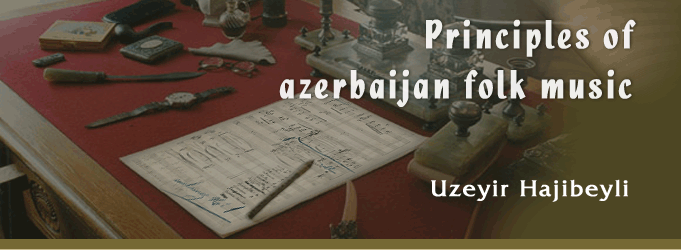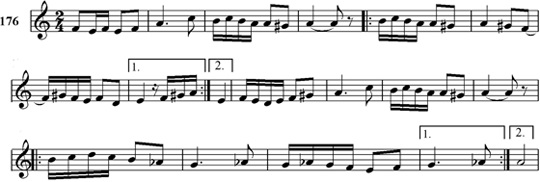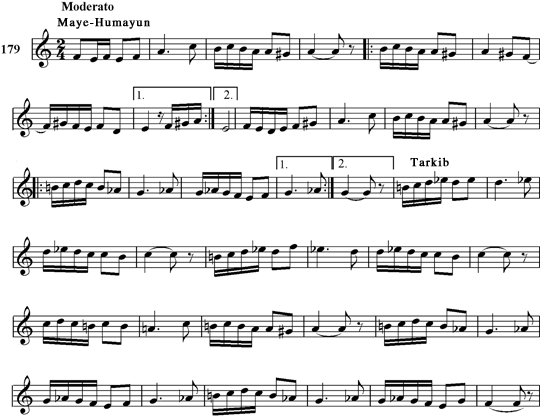

Part two
PRINCIPLES OF COMPOSING MUSIC
IN AZERBAIJANI MODES IN FOLK STYLE
IV. STRUCTURE OF MAJOR SIXTHSC. Full and half cadences
Full cadence generally ends with a stop in the lower quarte (sol) of the second tonic (do). However, there is another way of concluding it: after making a stop in the above lower quarte, the cadence continues and ends with a stop in the second degree of the second "Shushtar" scale (fa). It must be noted that very often a melody in the mode "Humayun" begins from this degree.
2. Composing of melodies in the mode "Humayun"While composing melodies in the mode "Humayun" one must keep to the rules shown "in the corresponding chapters for "Shushtar".
Generally, the first sentence (or the first period) is composed in the 1-st "Shushtar", but the response sentence is in the 2-nd one. While passing from one "Shushtar" to the main tone of the tonic, the 1-st "Shushtar" and the lower third of the tonic of the 2-nd "Shushtar" become enharmonic.
Below there is an example of the 1-st section of the mode "Humayun" called "Maye-Humayun":
Then the section called "Tarkib" follows (as in the mode "Shushtar"), which refers to the 2-nd "Shushtar" with the tonic do.The rules of constructing the first sentence of "Tarkib" are the same as for the section "Tarkib" of the mode "Shushtar". But the response sentence requires stops in the tonic of the 1-st "Shushtar".
It is necessary to join response sentence of "Maye-Humayun" to this example with a stop in the second degree of the scale of the 2-nd "Shushtar".
An example of composing music in the mode "Humayun":
[ "Humayun": pages 1 2 ]




